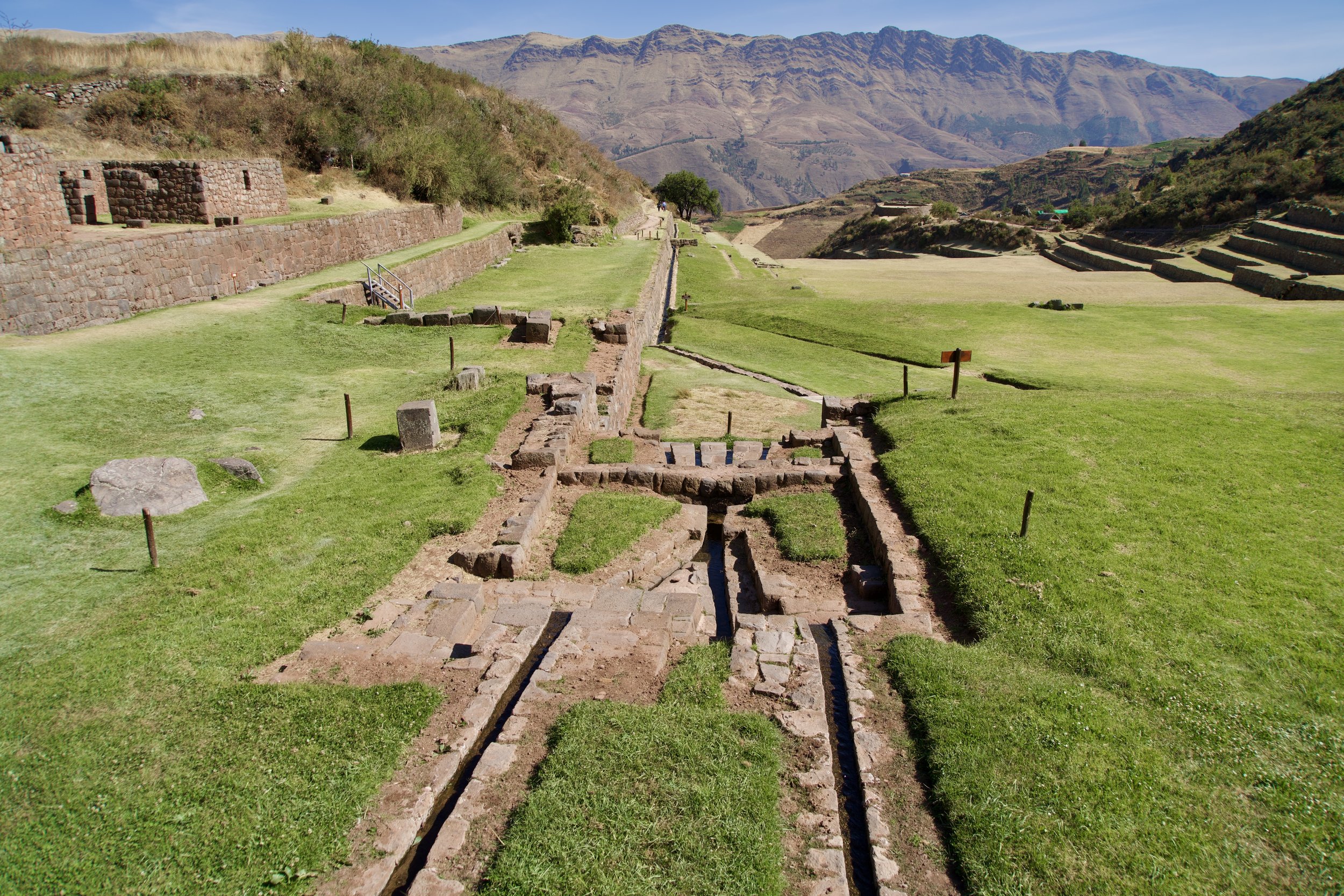Boleto Turistico
Pikillaqta is one of the least visited sites on the Boleto Turistico del Cusco because it’s south of Cusco, in the opposite direction from Machu Picchu.
What is the Boleto Turístico del Cusco?
The Boleto Turístico del Cusco is a single ticket for Peruvian government owned archeological sites, monuments, and museums in Cusco and the Sacred Valley.
Why do I need the Boleto Turístico del Cusco?
The Boleto Turístico del Cusco is required for sixteen different monuments, museums and archeological sites in Cusco and the Sacred Valley of Peru. You cannot enter any of these sites without the boleto.
The full Boleto Turístico del Cusco has all 16 monuments, museums and archeological sites and is valid for 10 days.
Where can I buy the Boleto Turístico del Cusco?
It’s for sale at all of the major archeological sites that require it. Some of the smaller museums don’t sell the boleto, so either buy it at an archeological site or at the office on Avenida del Sol, the main avenue that leads from Cusco’s Plaza de Armas down to the Qorikancha. Some travel agencies offer to buy it for you, but that’s not necessary since you can buy it at most of the places that require it. Note: you must pay cash Peruvian Soles.
Where can I use the Boleto Turístico del Cusco?
The most common sites that people use the Boleto Turístico del Cusco for are Sacsayhuamán, Q’enqo, Puka Pukará, Tambomachay, Pisac, Ollantaytambo, Moray, and Chinchero. It also gets you into another eight museums, monuments and archeological sites. You can search my website for information about all of these places. Just scroll down to the bottom of this page and enter the name of the site in the search function to see the blogs I’ve written about the place - and look for published articles on this page.
Peruvians get discounts because these are government sites, partially funded by taxes.
How much does the Boleto Turístico del Cusco cost?
General cost (tarifa in Spanish) for the full boleto is s/130 PEN (Peruvian Nuevo Soles). The partial boleto costs s/70. Peruvians get discounts because these are government owned sites and funded in part by the taxes that Peruvians are already paying. NOTE: You must pay in cash no matter where you buy the boleto.
This is my partial boleto from 2019, but it still looks the same in 2025.
What’s the difference between the full and partial Boleto Turístico del Cusco?
The full boleto gets you into all 16 sites and is valid for ten days. There are three different options for the partial Boleto Turístico del Cusco. The first partial option is called Circuit 1 and it’s valid for only one day at the four sites on the Cusco City Tour: Sacsayhuamán, Q’enqo, Puka Pukará, and Tambomachay (photos of these four sites are below). The second partial option, Circuit 2, is valid for two days at the museums in Cusco, plus Tipón and Pikillaqta in Cusco’s South Valley. The third option, Circuit 3, is valid for two days for the Sacred Valley sites Pisac, Ollantaytambo, Chinchero & Moray.
Can I buy a ticket for just one archeological site?
No. Even if you want to see only Sacsayhuamán (pronounced sack-sigh-wah-mon), you have to buy either the full Boleto Turístico del Cusco or the partial boleto for Circuit 1. You will always get to see Q’enqo, Tambomachay and Puka Pukará with any ticket that gets you into Sacsayhuamán.
What is the student discount for the Boleto Turístico del Cusco?
Children aged 10 to 17 and students with a school photo ID card up to age 25 pay s/70 for the full Boleto Turístico del Cusco but do not get a discount on the partial boleto. Children 9 years old and younger get in free.
The money you spend on the Boleto Turístico del Cusco goes to maintenance of all these sites.
Who gets the money from the Boleto Turístico del Cusco?
This is the good news! The full cost of the Boleto Turístico del Cusco actually goes to the maintenance of the sites that you’re visiting. When you visit a site, they punch a hole in your boleto for that part of the ticket and count you as a person who visited. Each month, the amount of money earned from boleto sales is distributed depending on how many people visited each place. That gives sites with more visitors more money to maintain the site and make it user friendly. Sites with fewer visitors (like Tipón) have less of a budget to work with.
Tipón has an amazing water temple and is absolutely worth visiting, though it’s one of the least visited sites
Where your money goes is important because the money from Machu Picchu ticket sales goes to Lima and in theory 20% of that goes to maintenance and archeological studies at Machu Picchu, but in reality, they get back much less than 20%. The Boleto Turístico del Cusco is local government distributing all the income directly to the archeological sites that need the funding. The money is used for maintenance and for funding more archeological studies and restoration.
The Qorikancha is not a government owned site and not included in the Boleto Turístico del Cusco.
What does the Boleto Turístico del Cusco not include?
The most popular places that it doesn’t include are the churches in Cusco, including the Convento de Santo Domingo, which owns the Qorikancha. The Qorikancha is an Inca site, but since the Spanish built a church on top, it now belongs to the Catholic Church. Read more about the Qorikancha on this blog. The boleto does not include private museums, which is a shame because my favorite museum in Cusco is the Museum of Pre-Columbian Art, in the Plazoleta Nazarenas.
Maras is a hillside of salt ponds which is owned by the Maras community. They charge a separate entrance fee because the site is not owned by the government.
Want more information?
Read my Cusco Travel Tips blog and download my app Peru’s Best.




















